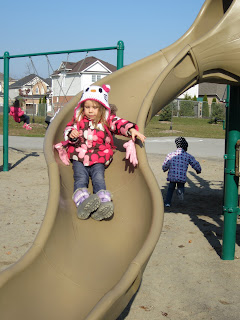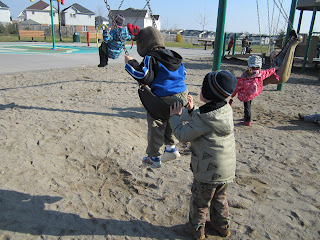Several parents have been asking about self-regulation. What is it? Why is it important? What does it look like?
Self-regulation is the ability to respond to stressors and return the mental and physical system to a calm, balanced state. Being calm and balanced is the best state for learning, which is why it is so important.
Stressors could be all sorts of things: changes in routines, noise, light, crowds, exciting situations like parties, generalized anxiety, scratchy clothing or tight shoes, stimulating video games or toys, etc.
When self-regulation breaks down, self-control is also lost. This is what leads to impulse problems, hands-on behaviour, and generally bad behavioural choices.
"Developmental researchers have identified self-regulation
– the ability to respond effectively to various stressors and
return to a state of equilibrium – as central to the ability to learn.
We know this from our classroom experience. The hyperactive
child and the child who can hardly stay awake will both
struggle to focus, as will the child who is highly anxious or
very sensitive to light and sound." - from Learn Magazine
Here's an example from a famous study. A four year old is left alone in a room with a marshmallow, and was told not to eat it until the adult returned. If the child waited, he would get an extra marshmallow as a reward. If not, no extra marshmallow.
40% of four year olds were able to delay gratification and control their impulse to chow down. Those 40% showed higher academic achievement when studied again years later. Self-regulation = academic success.
In our class, we are looking for children who can regulate their voices (indoor voice), walk in the classroom, share toys, use words to solve problems, and stop playing at clean up time. We encourage this through clear expectations, positive feedback for good self-regulation, and a visual tracking system for when self-regulation breaks down.
We give them warnings before changing activities so they can start preparing to stop playing. As teachers, we model our own self-regulation by being in a calm, alert state when interacting with the children.
If you're interested in learning more, check out this short article:
http://www.self-regulation.ca/?wpfb_dl=10
For more indepth reading, take a look at this one, geared towards teachers (but still very useful at home):
http://www.self-regulation.ca/?wpfb_dl=4
As always, let us know if you have any questions about this or any other topic.



















































